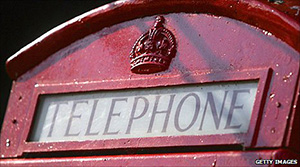Technology & Telecommunications
-
Carsales has plenty of potential
Roger Montgomery
March 20, 2014
In this article for the Switzer Super Report, I look at the success of Carsales, and the outperformance of online list providers in general. Read here.
by Roger Montgomery Posted in Technology & Telecommunications.
-

Looking for intrinsic value
Tim Kelley
March 7, 2014

These are trying times for value investors. There’s nothing we enjoy more than finding a high quality business trading at a discount to its intrinsic value, but lately, they seem to be thin on the ground. continue…
by Tim Kelley Posted in Companies, Technology & Telecommunications.
-


MEDIA
One day, you’ll be glad you feel old and tired
Roger Montgomery
February 28, 2014
In this article for Cuffelinks, I discuss Facebook’s recent $21 billion acquisition of instant messaging app, WhatsApp. Read here.
by Roger Montgomery Posted in On the Internet, Technology & Telecommunications.
-
Is $1.00+ unreasonable for BigAir?
Russell Muldoon
February 28, 2014
When BigAir Group Limited (ASX:BGL) was trading in the low $0.70 range back in September last year, we asked a relatively simple question: was $0.80+ unreasonable for BGL? Our thoughts at the time can be found here. continue…
by Russell Muldoon Posted in Companies, Technology & Telecommunications.
-

An Australian World-Beater
Tim Kelley
February 24, 2014

Infomedia (ASX:IFM) is small and not very liquid. Stockbrokers dislike illiquidity, so it doesn’t receive a lot of analyst coverage, and many people may not have heard of it. continue…
by Tim Kelley Posted in Companies, Technology & Telecommunications.
-
Credit Corp Maintains Momentum
Russell Muldoon
February 3, 2014
For those who have been reading our quarterly updates for the past few years on Credit Corp Group Limited (CCP), we must be beginning to sound like a broken record. We certainly feel like one. continue…
by Russell Muldoon Posted in Companies, Consumer discretionary, Technology & Telecommunications.
-


WHITEPAPERS
Tech stock alert: seduction or value?
Roger Montgomery
December 13, 2013
Tech stocks have a reputation for seducing investors. In the last subscriber-only white paper for 2013, find out which tech stocks are Montgomery investment grade. continue…
by Roger Montgomery Posted in Technology & Telecommunications, Whitepapers.
-

Alert: Which Floats Will Sink or Swim?
Roger Montgomery
December 5, 2013
Veda opens near our intrinsic value estimate of $1.77.
As you know we have been speaking about the only game in town being the current rash of IPOs for some time. continue…
by Roger Montgomery Posted in Consumer discretionary, Technology & Telecommunications.
-

Hanging Up
Roger Montgomery
November 3, 2013
We found this comment interesting from a global analyst we really like… continue…
by Roger Montgomery Posted in Insightful Insights, Technology & Telecommunications.
-

Is BigAir Flying High?
Roger Montgomery
October 21, 2013
The subject of telecommunications advances and the companies that make up the telco sector are regular topics of discussion at Montgomery Investment Management.
The group’s stalwart is of course Telstra, but despite its popular acceptance as a ‘blue chip’ company, we have tended to avoid investment and preferred, and still own, a number of the second tier competitors. continue…
by Roger Montgomery Posted in Technology & Telecommunications.